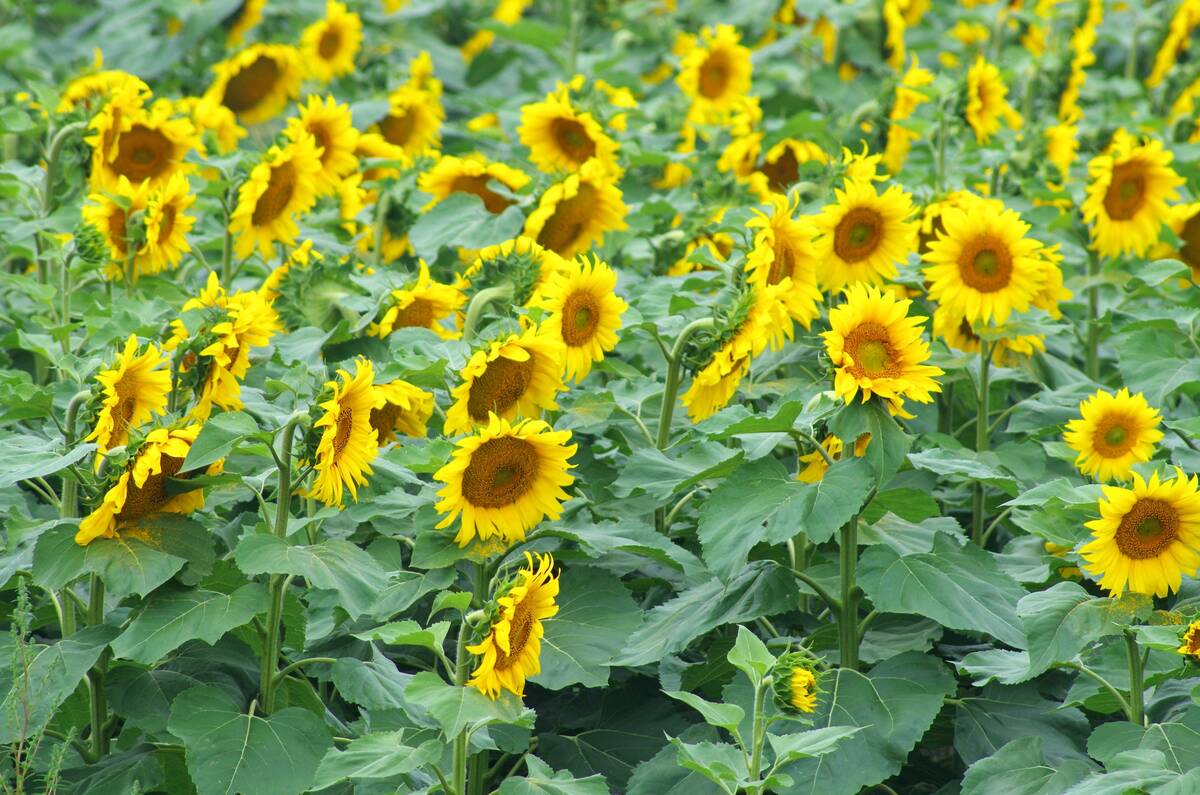Everything comes with a cost, even desirable wheat traits.
For scientists trying to breed new wheat varieties with high yield, the cost is late maturity.
Conversely, for those trying to develop varieties with early maturity, the cost is low yield.
But researchers at the University of Alberta are trying to overcome that obstacle, with an eye to developing high yielding wheat varieties with a short enough maturity to be suitable for the northern Prairies.
“In those climates, you have to make the plants mature within that shorter season,” said wheat breeder Dean Spaner. “In order to do that, you’re always compromising yield potential.”
Read Also

Made-in-Manitoba sunflower hybrid heads to market
Glacier FarmMedia – Manitoba’s confection sunflower growers will have a new seed option next spring that was developed specifically to…
That inverse relationship between maturity and yield is made clear by a quick glance at the list of recommended varieties for 2003 published by Saskatchewan Agriculture.
The guide uses Katepwa, which requires 98 days for maturity, as the basis for yield comparisons.
AC Barrie, which takes 100 days to reach maturity, yields 112 percent of Katepwa, while Roblin, which matures in 97 days, yields 94 percent of Katepwa.
The earliest maturing spring wheat in Canada is Cutler, a Canada prairie spring red variety that was developed at the U of A. It matures 10 days earlier than the check variety AC Taber, but yields only 86 percent as much.
In the U of A program, originally spearheaded by Keith Briggs and then taken over by Spaner in 2000, researchers test, evaluate and develop wheat germplasm from across Western Canada and around the world and work directly with breeders to feed promising lines into variety-development efforts.
That has led to significant improvements for both maturity and yield traits in the same wheat germplasm, which is now being used as parent material to produce new varieties that display both traits.
Producers in the parkland and Peace River regions will benefit the most from any new varieties that come out of the program.
Both regions boast rich soil and good moisture conditions most years, but the growing season is severely limited.
The wheat crop frequently suffers quality damage and downgrading and producers are unable to achieve the same yields as their peers elsewhere on the Prairies.
“Earlier maturing varieties that don’t compromise yield potential will help them take advantage of the parkland soil benefits with less yield disadvantage,” Spaner said.
A wheat plant’s yield is determined in large part by a measurement known as “growing degree days,” which is calculated by adding the maximum and minimum temperature for a given day and dividing that sum in half.
For example, a high of 20 and a low of 10 would translate into 15 growing degree days (20 plus 10 divided by two).
A plant needs 60 to 100 growing degree days to produce one leaf and the more leaves a plant produces, the greater the yield.
Spaner said he expects the research now under way will yield a new generation of high yielding, low maturing cultivars in five to seven years.
“We might have some that are four to five days earlier than Cutler,” he said, although he added that Canada’s demanding quality and agronomic requirements might make it difficult to achieve that potential.














